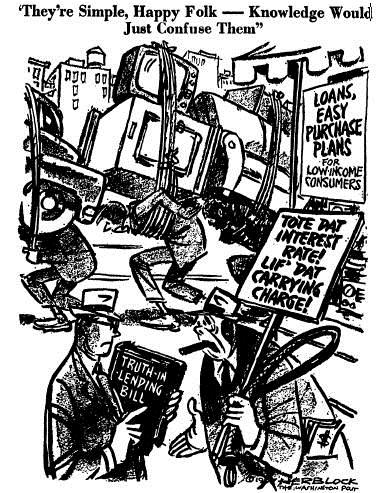Banking and Credit
Since the Great Depression, Congress has passed a series of laws to preserve stability in the banking and credit industries, protect consumers from unfair and deceptive practices and make affordable credit available to middle class and low-income families and small businesses. Beginning in the 1980s, the deregulation of financial institutions has fed speculative booms and devastating busts. Privatization of low-cost government credit for student loans and mortgages and weaker consumer protections has driven up the cost of credit and put consumers at risk.
Commentary
Information is power… and that’s the problem
Why #OccupyWallStreet?
Cry Wolf Quotes
You're wrong in stating where the problem came from. The problem came from this notion that everybody in America had a right to a house whether they could ever afford to pay their loan back. That's what the Community Reinvestment Act was all about.
This bill fundamentally changes the entire business model of credit cards by restricting the ability to price credit for risk. It is a fundamental rule of lending that an increase in risk means that less credit will be available and that the credit that is available will often have a higher interest rate.
[The bill would] have a dramatic impact on the ability of consumers, small businesses, students, and others to get credit at a time when our economy can least afford such constraints.
The CRA has created opportunities for rent seeking and financial and logistical burdens for all lenders. The Act forces lenders to spend money, time, and resources on documentation, PR, and other compliance costs.
Related Laws and Rules
Evidence
-
Banking Lobby's Warnings About CARD Act Disproven
What happened after credit card reform bill passed Congress in 2009 (it worked).
-
The Successes of the CARD Act
The Consumer Financial Protection Bureau describes exactly what the act did and what the effects were one year later.
Backgrounders & Briefs
A Timeline of the CARD Act
An interactive timeline of credit card reform.
Resources
The National Community Reinvestment Coalition works against unfair lending and banking practices, particularly those targeted towards low and middle income families.



